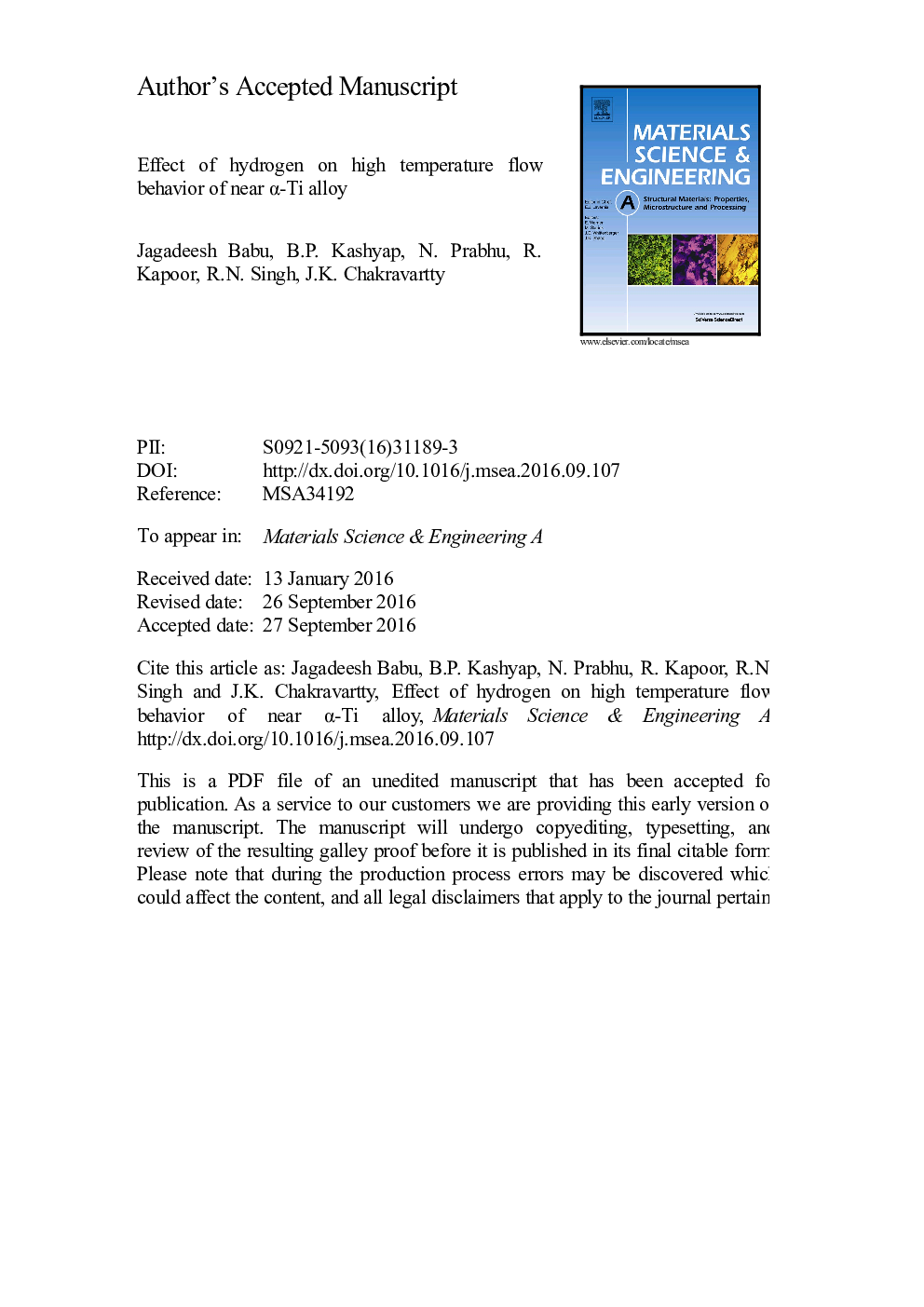| Article ID | Journal | Published Year | Pages | File Type |
|---|---|---|---|---|
| 5456590 | Materials Science and Engineering: A | 2017 | 32 Pages |
Abstract
The effect of hydrogen on high temperature flow behavior of VT20, a near α-Ti alloy, was studied using differential strain rate compression tests. Hydrogen level was varied from 0.0015 to 0.36 wt%. Strain rate jump tests were carried out over the strain rate and temperature ranges of 10â3-10â1 sâ1 and 600-947 °C, respectively. The addition of hydrogen increased the volume fraction of β phase, decreased the grain size and lowered the flow stress up to test temperature of 900 °C. The values of apparent strain rate sensitivity (m) and activation energy for deformation (Q) were found to vary from 0.03 to 0.46 and 176-382 kJ/mol, respectively, depending on strain rate, test temperature and hydrogen level. With increasing hydrogen content the peak strain rate sensitivity shifted to lower temperatures. The values obtained for m (â¥0.30) and Q (~176 kJ/mol) suggested that the deformation mechanism is the grain boundary sliding accommodated by lattice diffusion. The lower values of m (0.20-0.25) suggested dislocation climb as the deformation mechanism and the further decrease in m and increase in Q suggested power law breakdown.
Related Topics
Physical Sciences and Engineering
Materials Science
Materials Science (General)
Authors
S.M. Jagadeesh Babu, B.P. Kashyap, N. Prabhu, R. Kapoor, R.N. Singh, J.K. Chakravartty,
